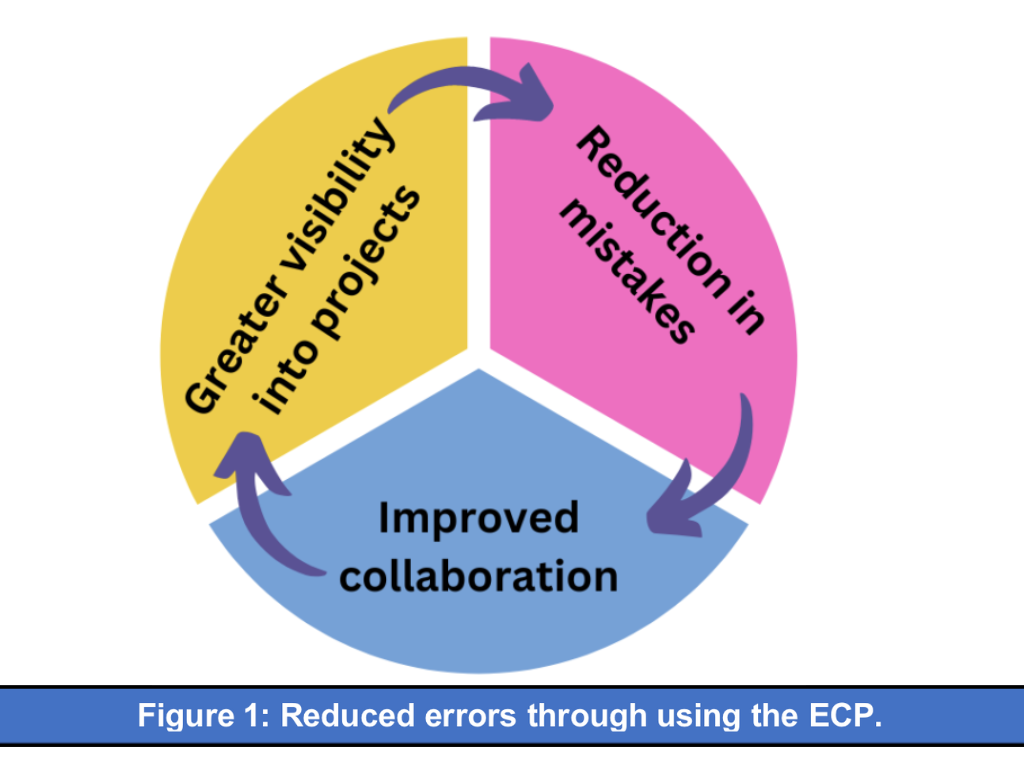In today’s competitive business landscape, efficiency and streamlined operations are crucial for maintaining profitability and growth. However, many businesses have outdated or disjointed systems, leading to significant financial losses. Implementing an Enterprise Resource Planning (ERP) system can help mitigate this risk, but understanding the importance and execution of such a system is crucial.
The Risks of Operating Without an ERP
- Data Inaccuracy and Redundancy
Without an ERP, businesses rely on disparate systems and spreadsheets, leading to data inconsistencies and errors. For instance, sales data might not align with inventory records, causing stockouts or overstocking. Redundant data entry increases the chances of errors, causing discrepancies that can be costly and time-consuming to fix.
Scenario: A customer calling a telecommunications company for support may face frustration if their account information differs between billing and technical support systems, leading to delays in issue resolution. According to FounderJar, ERP implementation helped 74% of organizations bridge business or functional silos. - Inefficient Processes and Lost Productivity
Manual processes are inherently slower and prone to human error. When employees spend significant time on repetitive tasks like data entry or reconciliation, it detracts from more strategic activities. ERP systems automate these processes, reducing the time and effort required, and freeing employees to focus on value-added tasks.
Scenario: Finance personnel may spend significant time manually reconciling accounts instead of analyzing financial data to identify cost-saving opportunities or growth areas. According to Parsimony, 66% of organizations report that their ERP systems have helped increase efficiency. - Poor Decision Making
Accurate and timely information is crucial for decision-making. Without an ERP, accessing and compiling necessary data can be cumbersome and slow. This delay can result in missed opportunities and reactive rather than proactive management. An ERP system provides real-time data and analytics, enabling better forecasting, planning, and decision-making.
Scenario: A food manufacturer may struggle to anticipate demand for seasonal products, resulting in excess inventory or stockouts. According to Fivetran, 71% of companies believe that decisions are delayed if the ERP system is unavailable. - Increased Operational Costs
Disjointed systems can lead to inefficiencies that increase operational costs. For example, poor inventory management might result in excess stock that ties up capital or shortages that disrupt production. ERP systems optimize inventory levels, streamline procurement, and reduce wastage, ultimately lowering costs.
Scenario: a manufacturing company may overlook opportunities to streamline production processes due to a lack of data on machine downtime and production bottlenecks, resulting in higher production costs. According to Impact, businesses saw 95% of process improvement after implementing an ERP system. - Compliance Risks
Compliance with industry regulations and standards is essential but challenging without centralized data. ERP systems ensure that data is accurate and readily available, simplifying compliance reporting and reducing the risk of penalties associated with non-compliance.
Scenario: A pharmaceutical company may struggle to track product recalls and document regulatory compliance without a centralized system, leading to compliance gaps and regulatory penalties. According to ECi Software Solutions, 75.4% of organizations that use ERP realized expected benefits with compliance. - Customer Dissatisfaction
In today’s market, customer expectations are higher than ever. Delays in order processing, shipping errors, or poor customer service due to disjointed systems can lead to dissatisfaction and loss of business. ERP systems enhance customer service by providing a unified view of customer data, improving order accuracy, and ensuring timely delivery.
Scenario: A retail bank may struggle to provide personalized financial advice without integrating customer data from various channels, leading to missed cross-selling opportunities and customer churn. According to TechReport, 45% of companies experience ease in accessing customer and enterprise data, facilitating timely decision-making.
Practical Strategies for Successful ERP Implementation
Implementing an ERP system is a significant investment and requires careful planning and execution. Here are practical strategies to ensure successful ERP implementation and achieve desired results:
- Conduct a Needs Assessment
Before selecting an ERP system, conduct a thorough needs assessment to identify the specific requirements of your business. Engage stakeholders from different departments to understand their pain points and requirements. This will help you choose an ERP solution that aligns with your business goals and processes.
Scenario: A manufacturing company conducting a needs assessment might discover that its systems lack integration between production planning and inventory management, leading to production delays and excess inventory costs. By involving stakeholders from the production, procurement, and finance departments, they identify the need for an ERP solution that provides real-time visibility into inventory levels and production schedules. - Choose the Right ERP Solution
Many ERP solutions are available in the market each with its strengths and weaknesses. Consider factors like scalability, customization options, user-friendliness, and vendor support. Evaluate multiple vendors and solutions through demonstrations, case studies, and references from other businesses in your industry.
Scenario: A retail chain evaluating ERP solutions might prioritize scalability to accommodate future growth and support multiple store locations. They also seek a solution with robust inventory management features to streamline replenishment processes and optimize stock levels based on demand forecasts. - Develop a Clear Implementation Plan
A clear and detailed implementation plan is crucial for the success of an ERP project. Define the scope, timeline, budget, and resources required. Establish milestones and deliverables to track progress. Ensure having a dedicated project manager to oversee the implementation process and address any issues that may arise.
Scenario: A healthcare organization embarking on an ERP implementation develops a detailed implementation plan that includes key milestones such as system configuration, data migration, user training, and go-live. They allocate resources, define roles and responsibilities, and establish communication channels to ensure smooth coordination throughout the implementation process. - Ensure Data Accuracy and Migration
Data migration is a critical phase in ERP implementation. Ensuring existing data is clean, accurate, and complete before migrating to the new system. Develop a data migration plan that includes data extraction, transformation, and loading (ETL) processes. Conduct thorough testing to validate data accuracy post-migration.
Scenario: A financial services firm undergoing an ERP implementation conducts a thorough data cleansing process to identify and rectify inconsistencies in customer records, transactional data, and financial reports. They establish data validation procedures and conduct extensive testing to ensure data accuracy post-migration. - Train Your Employees
Employee training is essential for the successful adoption of an ERP system. Provide comprehensive training sessions for all users, tailored to their roles and responsibilities. Ensure that employees understand how to use the system effectively and how it benefits their daily tasks.
Scenario: A manufacturing company conducts comprehensive training sessions for employees across various departments, including production, inventory management, procurement, and finance. They provide hands-on training using simulated scenarios and role-based workshops to ensure employees understand how to navigate the ERP system and perform their tasks effectively. - Monitor and Optimize
After the ERP system is live, continuously monitor its performance and gather user feedback. Identify areas for improvement and make necessary adjustments. Regularly review system performance metrics and optimize processes to ensure the ERP system delivers the expected benefits.
Scenario: Using the ERP system’s reporting capabilities, a hospitality group monitors key performance indicators (KPIs) such as room occupancy rates, average revenue per available room (RevPAR), and guest satisfaction scores. They conduct regular reviews to identify areas for improvement, such as optimizing room allocation algorithms or enhancing guest loyalty programs.
Industry Trends:
- Integration with IoT and AI
Modern ERP systems increasingly integrate with the Internet of Things (IoT) and Artificial Intelligence (AI) to enhance real-time data collection, predictive analytics, and automated decision-making.
Integration with IoT devices allows ERP systems to collect real-time data from sensors, machines, and other connected devices. For example, in a manufacturing environment, sensors embedded in production equipment can transmit data on machine performance, production output, and quality metrics directly to the ERP system. This real-time data enables proactive maintenance, optimized production scheduling, and better resource allocation.
AI algorithms integrated into ERP systems can analyze vast amounts of data collected from IoT devices to identify patterns, trends, and anomalies. For example, AI-powered ERP systems can analyze customer behaviour and data received from IoT sensors in stores to predict demand for specific products, optimize inventory levels, and personalize marketing campaigns.
Predictive analytics capabilities help businesses anticipate market changes, mitigate risks, and capitalize on opportunities more effectively. - Mobile ERP
The demand for mobile access to ERP systems is growing, enabling employees to access critical business information on the go. This trend is driven by the increasing mobility of the workforce and the need for real-time data access.
Mobile ERP applications enable employees to access critical business information, perform tasks, and collaborate with colleagues from any location using smartphones or tablets. For example, sales representatives can access customer data, update orders, and track sales performance while on the road, enhancing productivity and responsiveness. - Focus on Industry-Specific Solutions
ERP vendors offer industry-specific solutions tailored to the unique requirements of various sectors such as manufacturing, healthcare, retail, and services. These industry-specific ERP solutions provide pre-configured templates, workflows, and functionalities designed to address sector-specific challenges and compliance requirements, enabling faster implementation and greater business value. - Data Analytics and Business Intelligence (BI) Capabilities:
Data analytics and business intelligence (BI) capabilities are integral components of modern ERP systems and enable businesses to leverage data-driven insights for decision-making, forecasting, and strategic planning. Advanced reporting tools, interactive dashboards, and predictive analytics features empower users to analyze trends, identify opportunities, and mitigate risks effectively. Integration with third-party analytics platforms and AI-driven predictive modelling further enhances ERP’s analytical capabilities. - Ecosystem Expansion and Integration Capabilities
ERP vendors are expanding their ecosystems and fostering partnerships with third-party software vendors, technology providers, and system integrators to enhance integration capabilities and offer comprehensive solutions. Integration with CRM systems, e-commerce platforms, supply chain management (SCM) software, and other business applications enable seamless data exchange, process automation, and end-to-end business process management.
APIs (Application Programming Interfaces) and middleware solutions facilitate interoperability and data synchronization between ERP and external systems, enabling businesses to leverage best-of-breed solutions and optimize their IT infrastructure. - User Experience (UX) and Interface Modernization:
ERP vendors focus on improving user experience (UX) and modernizing interfaces to enhance usability, productivity, and adoption rates. User-friendly interfaces, intuitive navigation, and personalized dashboards are becoming standard features in modern ERP systems. Mobile-friendly designs, role-based access, and customizable workflows empower users to perform tasks efficiently and access critical information anytime, anywhere.
Conclusion
In today’s business environment, it is crucial to have an efficient and accurate system for managing data. Operating without an ERP system can lead to various risks, including data inaccuracies, higher operational costs, suboptimal decision-making, and customer dissatisfaction. However, by implementing an ERP system and following practical strategies, businesses can mitigate these risks and achieve sustainable growth and profitability.




















